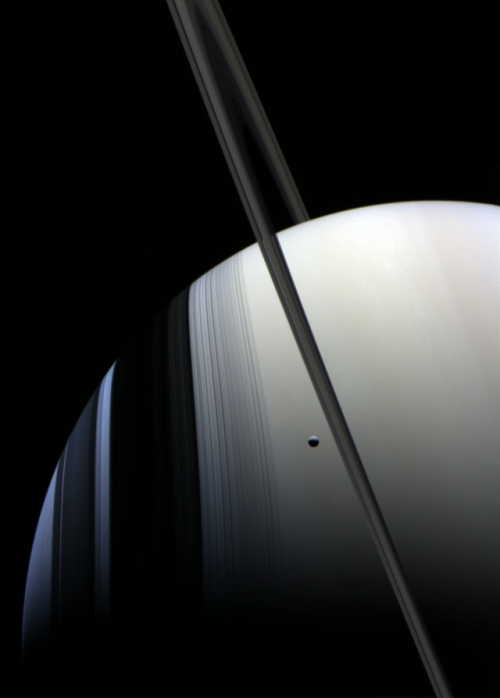Bonne Et Heureuse Année 2018 Avec Beaucoup D'amour, La Santé Dans Un Monde Pacifié 🎉🥂🎆😘

Bonne et Heureuse Année 2018 avec beaucoup d'amour, la santé dans un monde pacifié 🎉🥂🎆😘
More Posts from Oursj-p and Others

Saturn and Tethys
Image: NASA/JPL/Solaris
https://twitter.com/Sciences_Avenir/status/925393961606438912?s=09
Découvrez le Tweet de @Sciences_Avenir :





Sci-fi + drinks

Rosetta Probe takes self image en-route to comet 67P
A view you’d see from an asteroid’s surface!
Japan’s space agency (JAXA) has successfully landed two small rovers on the asteroid Ryugu. Their “mothership” Hayabusa 2 reached the asteroid in summer at a distance of 313 million km (194 million miles) from Earth, a journey which took 3.5 years. Rover-1B captured this video of 15 frames on September 23, 2018.
Another spectacular sight was the Hayabusa 2 spacecraft’s shadow visible on the surface before releasing the rovers:

The mission’s goal is to study this potentially hazardous asteroid, and bring back a sample in 2020! Asteroids are not only space rocks that might collide with our planet, though. They are remnants from our solar system’s formation and help to investigate the origin of life and the Earth’s oceans.
⭐ Stay connected with Sci-universe on Tumblr and Instagram 📸: JAXA / Roman Tkachenko via @haya2e_jaxa
https://twitter.com/Sciences_Avenir/status/941251673548345344?s=09
Découvrez le Tweet de @Sciences_Avenir :

The Daredevil Spacecraft That Will Touch the Sun
In the summer of 2018, we’re launching Parker Solar Probe, a spacecraft that will get closer to the Sun than any other in human history.

Parker Solar Probe will fly directly through the Sun’s atmosphere, called the corona. Getting better measurements of this region is key to understanding our Sun. For instance, the Sun releases a constant outflow of solar material, called the solar wind. We think the corona is where this solar wind is accelerated out into the solar system, and Parker Solar Probe’s measurements should help us pinpoint how that happens.

The solar wind, along with other changing conditions on the Sun and in space, can affect Earth and are collectively known as space weather. Space weather can trigger auroras, create problems with satellites, cause power outages (in extreme cases), and disrupt our communications signals. That’s because space weather interacts with Earth’s upper atmosphere, where signals like radio and GPS travel from place to place.

Parker Solar Probe is named after pioneering physicist Gene Parker. In the 1950s, Parker proposed a number of concepts about how stars — including our Sun — give off energy. He called this cascade of energy the solar wind. Parker also theorized an explanation for the superheated solar atmosphere, the corona, which is hotter than the surface of the Sun itself.

Getting the answers to our questions about the solar wind and the Sun’s energetic particles is only possible by sending a probe right into the furnace of the Sun’s corona, where the spacecraft can reach 2,500 degrees Fahrenheit. Parker Solar Probe and its four suites of instruments – studying magnetic and electric fields, energetic particles, and the solar wind – will be protected from the Sun’s enormous heat by a 4.5-inch-thick carbon-composite heat shield.
Over the course of its seven-year mission, Parker Solar Probe will make two dozen close approaches to the Sun, continuously breaking its own records and sending back unprecedented science data.

Getting close to the Sun is harder than you might think, since the inertia of a spacecraft launched from Earth will naturally carry it in repeated orbits on roughly the same path. To nudge the orbit closer to the Sun on successive trips, Parker Solar Probe will use Venus’ gravity.
This is a technique called a gravity assist, and it’s been used by Voyager, Cassini, and OSIRIS-REx, among other missions. Though most missions use gravity assists to speed up, Parker Solar Probe is using Venus’ gravity to slow down. This will let the spacecraft fall deeper into the Sun’s gravity and get closer to our star than any other spacecraft in human history.

Get a behind-the-scenes view of the Parker Solar Probe under construction in a clean room on the NASA Sun Science Facebook page.

Keep up with all the latest on Parker Solar Probe at nasa.gov/solarprobe or on Twitter @NASASun.
Make sure to follow us on Tumblr for your regular dose of space: http://nasa.tumblr.com.
-
 reva1041 liked this · 7 years ago
reva1041 liked this · 7 years ago -
 oursj-p reblogged this · 7 years ago
oursj-p reblogged this · 7 years ago